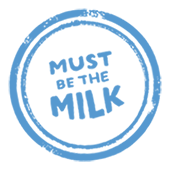Kids will soon be back to school, and parents should remember to include dairy for weekday breakfasts and in that brown bag lunch (or encourage children to choose dairy on the cafeteria line).
Healthy eating habits help kids concentrate in the classroom. Poor eating habits, like skipping meals, interfere with cognitive function and are associated with lower academic achievement. Iron deficiency is linked to shortened attention span, irritability, fatigue, and difficulty with concentration. A recent study found that eating breakfast may improve cognitive function related to memory, test grades, and school attendance. Studies have also found that children participating in the federal School Breakfast Program show increases in daily attendance, class participation, and academic test scores and decreases in tardiness.
(Learn more about these studies at http://futureofchildren.org/publications/journals/article/index.xml?journalid=36&articleid=98§ionid=607, http://eatocracy.cnn.com/2013/02/27/study-finds-school-breakfast-is-a-key-to-future-success/ and http://www.childrensfoodtrust.org.uk/research/behaviourandattainment/primary)
How can we encourage healthier eating? Give kids choices! Low-fat chocolate milk is a great option for breakfast and school lunches, and popular with kids, too. Milk offers great nutrition, with protein, calcium, and vitamins and minerals not found in energy drinks and waters.
Check out these other tips when planning your child’s menu this fall (thanks to Cincinnati Children’s Hospital Medical Center for the info, and you can learn more at http://consumer.healthday.com/vitamins-and-nutrition-information-27/food-and-nutrition-news-316/planning-children-s-meals-that-make-the-grade-690248.html ):
- Give children a healthy breakfast, but think outside the (cereal) box: a grilled-cheese sandwich can be an appropriate breakfast item along with 100 percent fruit juice. Traditional breakfast items are fine, too, like whole-grain cereal with low-fat milk, or yogurt and berries with low-fat granola.
- Other great breakfast choices: eggs, whole-wheat toast and fresh fruit; eggs, whole-wheat bagels, cheese and low-fat milk; or a peanut butter and jelly sandwich with low-fat milk.
- Fruits and vegetables should make up half of lunches and whole grains make up at least half of grains. Include lean protein and low-fat dairy as well, and limit the fats and sweets.
- Offer variety (yes, we know kids can be picky!). Use bagels, tortillas, English muffins or pita for sandwiches.
- Talk to your kids about healthy eating and encourage them to shop with you and make their own lunches.
- Send easy-to-eat fruit with your child to school, like grapes, apple wedges and strawberries. Yogurt or peanut butter can be used for dipping.
- Watch out for sugary drinks, even juice, and drinks that include caffeine!
Need more proof dairy is a delicious school lunch option?
The US Department of Agriculture has expanded its program to include Greek yogurt to public schools in seven states through the USDA’s School Lunch Program Pilot, after schools participating in a three-month Greek yogurt pilot consumed 200,000 pounds of Greek yogurt.
Now, that’s a LOT of yogurt!
Learn more about school nutrition and healthy school meals on our sister site, New England Dairy Council.

